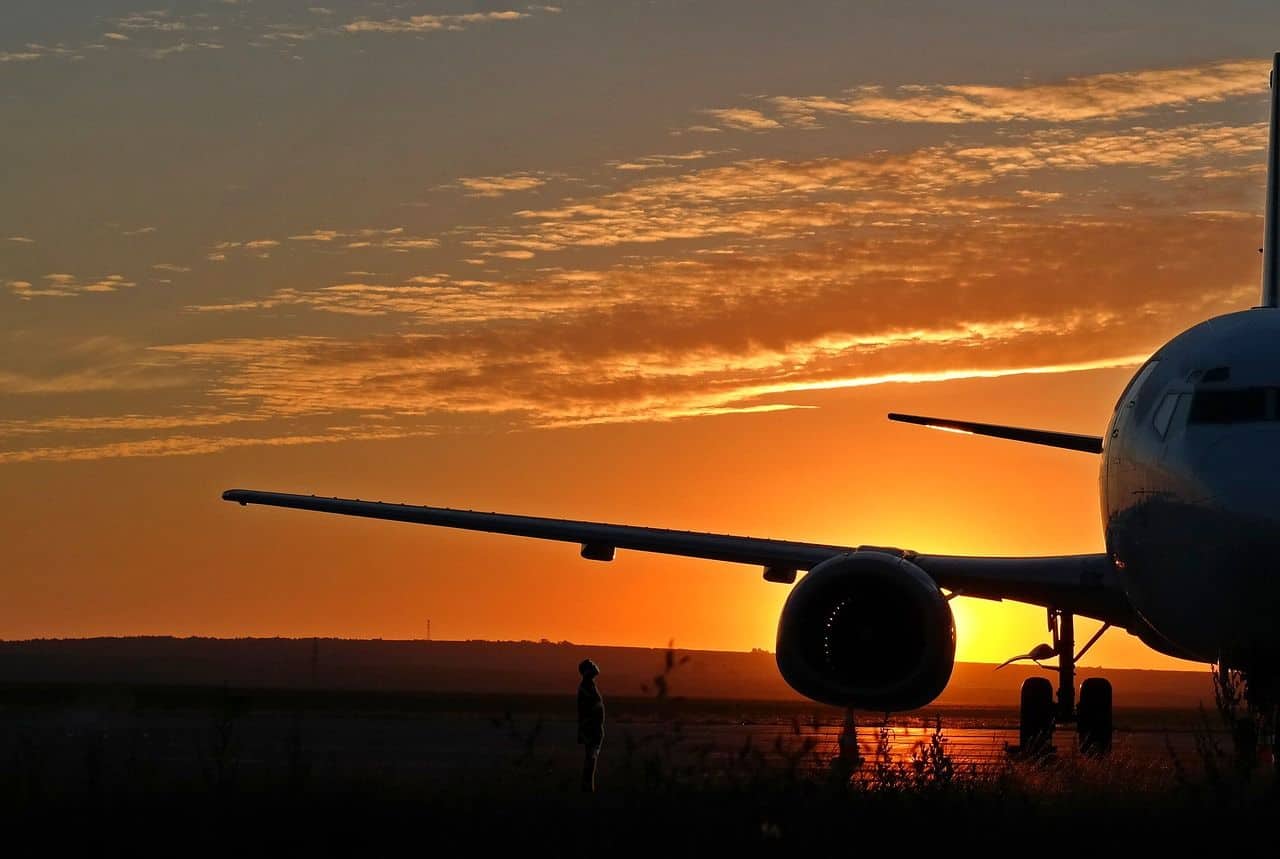Maximizing travel rewards is one of the best ways for Canadians to travel more for less, and we want to help you master this very rewarding world. While you await our beginners’ course, let’s take a look at something very basic: the 2 types of rewards that exist. This is arguably the most important thing to understand because they’re sooooo different.
You probably know Flytrippers for our expertise in finding great limited-time flight deals, often at over 50% off. However, we think that if you like travel deals, you’ll love free travel too.
So that is why we will be soon re-launching the travel rewards section on our website. There will be much more content to come and we want to help you learn all about travel rewards in 2021, so that you can be ready for when travel resumes.
Some see travel rewards as being too complicated, but it really doesn’t have to be. Yes, 1 of the 2 types of rewards that exist is a bit more complicated (and therefore also a lot more valuable)… but if you prefer, you can simply stick to the simple type.
Here are the 2 types of rewards.
What are rewards?
First, let’s just define what rewards are in the most basic way.
Rewards are freebies you can easily earn.
Various companies will reward you for your business; rewards can then be redeemed for free stuff.
Rewards, points, miles, loyalty programs, cashback… these terms all mean the same thing: you are being rewarded in some form.
Flytrippers uses the term “rewards” to encompass all those things.
The 2 types of rewards
No matter what the rewards are called, no matter who is offering the rewards, no matter what you can redeem the rewards for…
The rewards can only be either one of the 2 types of rewards. That’s why it is the most important part to understand.
The 2 types of rewards are:
- Fixed-value rewards: your rewards have a guaranteed value (more simple, less valuable)
- Variable-value rewards: your rewards do not have a guaranteed value (less simple, more valuable)
Another way to see it is this:
- Fixed-value rewards: the value is always the same, regardless of the redemption you choose
- Variable-value rewards: the value always varies based on the redemption you choose
There is no other type of rewards. Either it has a fixed value or it has a variable value. It simply cannot be any other way.
Well, some points are hybrid rewards, but that just means that the rewards program has 2 different and completely separate redemptions systems and that you can choose to use them either as fixed-value rewards or as variable-value rewards.
Examples – fixed-value rewards
Here are a few concrete examples of fixed-value rewards:
- cashback
- simple bank points that can be used to “erase” a travel purchase at a set value
- simple travel points that give you a set discount for specific flights or hotels
For example, fixed-value Scotia Rewards points are worth 1.0¢ per point always… so 20,000 points will always save you $200. Never more, never less.
In other words, with fixed-value rewards, you can never increase the value of your rewards. They are worth a set amount, and that’s it. They save you a fixed amount of money no matter which travel expense you choose to use them for.
You don’t have to learn anything about how fixed-value rewards work and you don’t have to be flexible at all. It is effortless.
Examples – variable-value rewards
Here are a few concrete examples of variable-value rewards:
- points that give you a free hotel night regardless of the hotel’s cash price
- points that give you a free flight regardless of the flight’s cash price
- points that give you a variable discount for specific flights or hotels
With variable-value rewards, the same amount of points .
For example, variable-value Marriott Bonvoy points have no set value… so 20,000 points can save you either $100 or $500. It varies greatly.
In other words, with variable-value rewards, you can get outsized value and unlimited value out of your rewards. If you use them well, they can save you 2, 3, 4, or even 10 times more money.
You do have to learn a bit about how variable-value rewards work and you have to be somewhat flexible. It requires a bit more effort.
(But we’ll help make it as simple as possible so you can get the most value.)
Why the type of rewards matter
As you probably understood by now, the basic mechanism of using rewards is the same for all fixed-value rewards. And also the same for all variable-value rewards, regardless of all the other factors.
For example, some like to classify rewards based on the issuers:
- Airline rewards
- Hotel rewards
- Bank rewards
- Other rewards
This can be useful, but it is not as important as fixed-value versus variable-value.
Because some airline rewards are fixed-value rewards while others are variable-value rewards. How to use them is completely different. Fixed-value airline rewards have much more in common with fixed-value bank rewards than they do with variable-value airline rewards.
At least for the most important part, which is how to actually use the rewards to get free travel.
Because that’s the whole point of all this, isn’t it?
Why there are 2 types of rewards
These 2 types of rewards exist simply because there will always be a major split among people in general:
- Those who want more simplicity
- Those who want more value
Fixed-value rewards are so much simpler, but also much less rewarding… like anything else in the travel world, the simpler and more convenient you want it to be, the less value you’ll get for your money. That’s normal. Convenience has a price, as always. That’s true in the world of travel, and that’s true in everything in life even.
If you are flexible, you can get much more value out of your rewards if you learn how to use them wisely and maximize them (variable-value rewards)… but at the very least, simpler rewards can give you a travel credit applied to any travel expense, if you don’t want to get into all the complicated stuff (fixed-value rewards).
How hybrid rewards work
Since hybrid rewards can be used as both types of rewards, they give you even more options and flexibility.
In terms of how hybrid rewards work, there are 2 ways for hybrid rewards to be hybrid:
- The rewards program itself can have 2 separate redemption systems (fixed vs. variable)
- The rewards can be transferred to another rewards program (transferable points)
With almost all hybrid rewards, you always have the freedom to use them however you prefer and can change your mind at any time with no restrictions.
There is one major exception though, which is the AIR MILES Rewards program: they are hybrid rewards, but once you select either fixed-value rewards (Cash Rewards) or variable-value rewards (Dream Rewards), your rewards are stuck there. You can change, but only what you earn from then on will change. So if you want to maximize the value you get out of your AIR MILES, we recommend you don’t do what most Canadians do… and instead choose Dream Miles right away!
That’s the example of a hybrid rewards program that has 2 completely separate redemption systems within the same rewards program.
Now for the other way to be hybrid, American Express Membership Rewards are the best example as they are the best transferable points in Canada. You can transfer Amex MR points to Aeroplan points, Avios points, SkyMiles, Marriott Bonvoy points, Hilton Honors points, and a few other airline rewards. All these transfer partners are variable-value rewards, so that’s how Amex MR points are also variable-value points indirectly.
Not to make this more complicated, but Amex MR points would also be hybrid even without the option to transfer them, because they can be used with the Amex fixed-points travel chart which is a separate variable-value system directly within the Amex MR program. But, hopefully you understand the distinction between both ways for rewards to be hybrid.
We’ll have more details about hybrid rewards and transferable points soon.
A bit more information about the 2 types of rewards
While you wait for our beginners’ course and our upcoming detailed posts about each of the 2 types of rewards, here are the 2 subtypes of each type of rewards if you want to learn more right now.
Fixed-value rewards can be either:
- standard fixed-value rewards: have a fixed value, but need to be used in some specific ways
- eraser fixed-value rewards: have a fixed value, but can be used to erase any expense
Here are 2 examples:
- BMO Rewards points are worth 0.71¢ per point always, but you need to redeem them via the BMO travel booking site
- Scotia Rewards points are worth 1.0¢ per point always, but you can use them to erase any travel purchase from any provider
It goes without saying that eraser fixed-value rewards are even more flexible and easier to use than standard fixed-value rewards. They offer the ultimate flexibility since there are no restrictions.
Here too, rewards can be hybrid: Amex Membership Rewards points can be used at 1.0¢ per point via the Amex travel booking site or at 1.0¢ per point to erase any travel purchase from any provider.
Variable-value rewards can be either:
- standard variable-value rewards: a flight/hotel costs a fixed amount of points no matter the cash price (there is a price chart)
- dynamic variable-value rewards: a flight/hotel costs a varying amount of points based on the cash price (there is no price chart, but the value still varies)
Here are 2 examples:
- Marriott hotel rewards will cost a fixed amount of Marriott Bonvoy points no matter the cash price
- Air Canada flight rewards will cost a varying amount of Aeroplan points based on the cash price
It goes without saying that dynamic variable-value rewards are even more complicated than standard variable-value rewards. They’re harder to maximize since there are no set prices.
Here too, rewards can be hybrid: Aeroplan points can actually also be used for flights that will cost a fixed amount of points if you use them for non-Air Canada flights (which is often the best use).
Why you should always earn rewards from 2 sides
As I said, there are many rewards:
- Banks will reward you for using their credit cards
- Hotel chains will reward you for staying in their hotels
- Airlines will reward you for flying on their airline
- Retailers will reward you for buying there
- Other services will reward you for various reasons
So you should always be earning rewards twice for everything you buy:
- Rewards on your credit card
- Rewards from the retailer/provider directly
These are completely stackable, therefore doubling up your rewards every time you buy something. We’ll even have pro tips to effectively triple-up (or more).
Even for retailers/providers that you don’t do business with often, you should still earn rewards from that side and never just the rewards from your credit cards. We’ll tell you more about how to easily do that too.
The 2 main steps in travel rewards
Again, as a teaser for upcoming content… why not take a look at the 2 main steps in travel rewards:
- accumulation (earning)
- redemption (burning)
Many love to use the “earn and burn” expression. That’s really how this all works. You earn rewards and then you burn rewards.
Both can be complex: accumulating rewards (earning) can be quite tricky but using rewards (burning) can be even more complicated when you want to maximize the value of your hard-earned rewards.
Earning
There are 3 main ways to accumulate rewards to get free travel:
- earning rewards thanks to credit card welcome bonuses
- earning rewards with the regular earn rate on your purchases
- earning rewards from the provider directly
For any traveler, the fastest way to earn rewards will definitely be with the credit card welcome bonuses because it is so much faster than just getting a tiny percentage in rewards on your purchases. Even if you are a very big spender, that just means you should be unlocking more welcome bonuses.
We’ve covered that part quite a bit already in our 25 myths about travel rewards that also serves as a very good introductory post.
And in terms of maximizing your earning on everyday purchases, we have great pro tips coming soon. For example, you should always use online shopping portals to earn more rewards and you should maximize the gift card trick for all your purchases at retailers that aren’t included in your cards’ category multiplier rates.
Burning
There are 3 main ways to redeem rewards to get free travel:
- completely free hotel nights (no taxes to pay)
- completely (or almost) free flights (taxes/surcharges to pay, but not always)
- completely free other travel expenses (Airbnbs, car rentals, ground transportation, etc.)
Which one should you choose? Well, that really depends on what type of traveler you are. We will be posting an article to help you plan your travel rewards strategy based on your travel goals soon.
But know that hotels and flights are by far the most common uses. And remember that using rewards for anything other than travel is the absolute worst thing you can do. It often gives you a lot less value and is not recommended at all.
Summary
So here’s the overview, these are the 2 types of rewards.
Any questions?
Want to see our current discounted plane tickets?
Click here to see our flight deals
Want more travel tips and inspiration?
Click here to see the blog homepage
You’ll probably enjoy this article:
How Ultra Low-Cost Carriers Work
Help us spread the word about our flight deals and travel tips by sharing this article and most importantly bookmark Flytrippers so we can help you navigate the world of low-cost travel!
Advertiser Disclosure: Flytrippers receives a commission on links featured in this blog post. We appreciate if you use them, especially given it never costs you anything more to do so, and we thank you for supporting the site and making it possible for us to keep finding the best travel deals and content for you. In the interest of transparency, know that we will NEVER recommend a product or service we do not believe in or that we do not use ourselves, as our reputation and credibility is worth far more than any commission. This principle is an essential and non-negotiable part of all our partnerships: we will never give any third-party any control whatsoever on our content. For more information on our advertiser disclosure, click here.
Travel Hacking Disclaimer: Flytrippers does not give financial advice. You should ensure travel hacking fits your personal situation and obtain professional advice if you so desire. Flytrippers may receive a commission for referrals, however our policy is to only recommend products or services we really believe in (and have ourselves). To read more on our disclaimer, click here.



